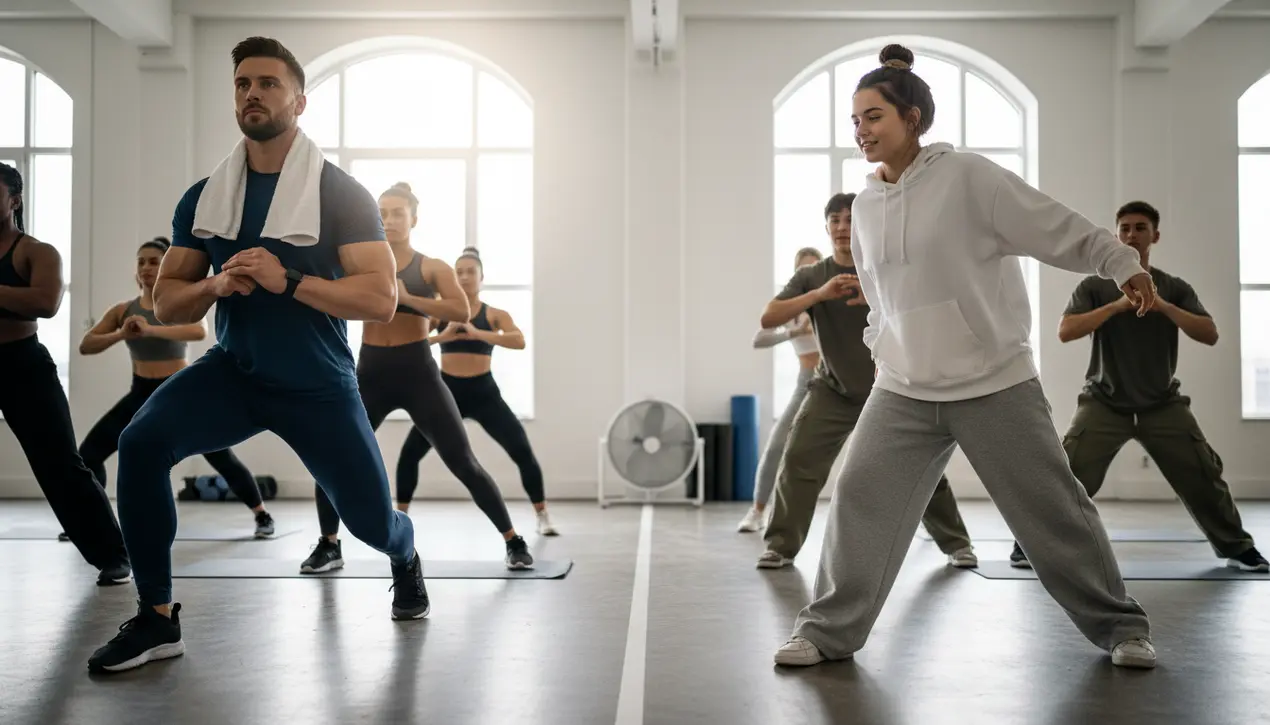
Entertainmentculture & trendsFashion and Style
Gen Z’s war against leggings as fashion shifts.
EM
Emily Carter
3 hours ago7 min read
The uniform of a generation is under siege, and the battlefield is the gym floor. For millennials, the second-skin embrace of leggings and form-fitting athleisure was more than fabric; it was a declaration of identity, a symbol of a life dedicated to wellness, performance, and the sculpted body as a testament to hard work.We wore our Lululemon Wunder Unders like armor, a sleek, seamless blend of function and a quiet, confident vanity. To see this sartorial staple now being casually dismissed by Gen Z as the garb of the geriatric is a blow that strikes deeper than any mere fashion critique—it feels like a premature aging, a marker of time’s relentless march that no amount of HIIT training can outrun.The new vanguard, with their ‘big cozy ultra-oversized wide-leg pants’ from the very same brands, champions a different ethos: comfort above all, a deliberate move away from the performative, body-conscious aesthetic that defined the 2010s. This isn't just a shift in silhouette; it's a philosophical schism.On one side, you have figures like Bobby McMullen, a millennial trainer and fitness influencer who embodies the old creed. For him, muscles are a story earned through countless deadlifts and lunges, and they deserve to be seen.'If you’re doing squats, I want to see an uncomfortable outline of whatever’s going on down there,' he proclaims with a zealot’s conviction, arguing that fitted clothes are a non-negotiable part of the functional fitness experience, allowing for a clear view of form and a celebration of the physique. This perspective is rooted in the millennial experience of the athleisure boom, where brands like Lululemon transformed gym wear from mere utility into a lifestyle, intertwining fitness with identity in an unprecedented way.Yet, the relentless cycle of cool waits for no one. The Gen Z pivot to baggy sweats and oversized tees is, in part, a classic act of generational differentiation, a rejection of what they perceive as the cringe-worthy vanity of their predecessors.It’s a move towards a more casual, almost anti-fashion fashion, where looking like you just rolled out of bed is the ultimate flex. But to view this as a simple death knell for leggings is to misunderstand the nuanced reality of modern fitness.As Sharon Kim, a millennial content creator, points out, function often dictates form. The idea of running miles or powering through a boxing session in voluminous sweatpants that snag and billow is, for many, a practical nightmare.Leggings, with their aerodynamic fit and moisture-wicking properties, are engineered for motion, not just for show. This suggests a future of coexistence rather than conquest.Coaches like Jojo Kelly, who straddles the millennial-Gen Z cusp, illustrate this hybrid approach: baggy layers for the warm-up and the post-workout coffee run, but sleek, technical leggings for the core of the session where form and freedom of movement are paramount. The true victors in this sartorial skirmish may not be a generation, but the astute athleisure corporations themselves.They have masterfully saturated the market with one trend and are now poised to capitalize on the next, selling an entirely new wardrobe of oversized essentials to a generation eager to define itself, while still catering to the entrenched habits of the millennial base. This war over waistbands is a poignant reminder that our clothes are never just clothes; they are the fabric of our aspirations, our insecurities, and our inevitable journey through the chapters of life. The cycle will continue—Gen Alpha will undoubtedly one day deem Gen Z’s beloved baggy pants hopelessly outdated—but the human drive to move, to feel strong, and to express identity through what we wear will endure, no matter the cut.
#featured
#Gen Z
#millennials
#fashion trends
#athleisure
#leggings
#generational divide
#culture
Stay Informed. Act Smarter.
Get weekly highlights, major headlines, and expert insights — then put your knowledge to work in our live prediction markets.
Comments
Loading comments...
© 2025 Outpoll Service LTD. All rights reserved.